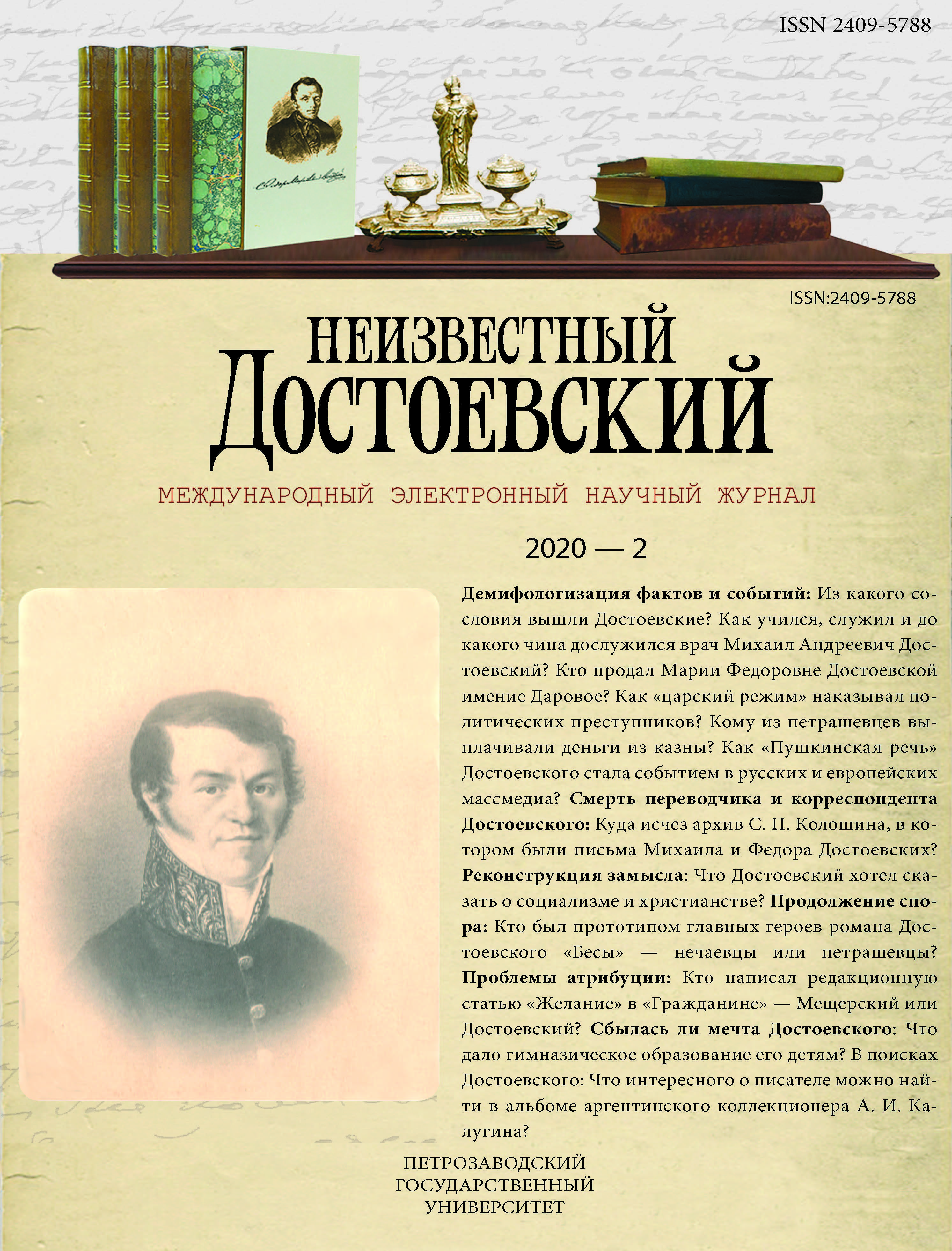Нечаевцы или петрашевцы? (О прототипах главных героев романа Ф. М. Достоевского «Бесы»)
The Nechaevtsy or the Petrashevites? (Prototypes of the Main Characters in Fedor Dostoevsky’s Novel Demons)
Author(s): Sergey A. KibalnikSubject(s): Language and Literature Studies, Literary Texts, Fiction, Russian Literature, Philology
Published by: Петрозаводский государственный университет
Keywords: prototype; main character; novel; Demons; creative history; preparatory materials; notebook; Dostoevsky; Petrashevsky circle
Summary/Abstract: The preparatory materials for the novel Demons, published in the first academic edition of Complete Works by Dostoevsky contain his notes stating that the image of one of his main characters, Pyotr Verkhovensky, was partly stylized after M. V. Petrashevsky. At the same time, commentators found a note in this publication indirectly confirming the hypothesis that Nikolai Speshnev was one of the main prototypes of Stavrogin. The paper analyzes the preparatory materials for Demons, in which the future Stavrogin was listed as “Prince”. They are compared with Dostoevsky’s personal impressions of communicating with Speshnev, not only in 1847—1849, but also in the 1860s, after his return from exile. In addition, they are juxtaposed with printed materials about Petrashevsky and Speshnev’s stay in Irkutsk in 1857—1860. These comparisons demonstrate that significant elements of Demons’ creative history are related to the fact that while Petrashevsky took a noticeable part in the incident around the so-called “Irkutsk duel” in 1860, which was directed against the Governor-General of Eastern Siberia N. N. Muravyov-Amursky, Speshnev, on the contrary, completely changed his beliefs by that time. Thus, the preparatory materials for the novel Demons fully confirm the assumption that Nikolai Speshnev (partly along with F. Dostoevsky himself) was the main prototype of Nikolai Stavrogin. At the same time, a reference to the behavior of M. V. Petrashevsky in his Irkutsk exile in 1859—1860 allows to understand why and how a socialist-revolutionary like Sergey Nechaev could be associated with M. Petrashevsky in the mind of Dostoevsky.
Journal: Неизвестный Достоевский
- Issue Year: 7/2020
- Issue No: 2
- Page Range: 119-141
- Page Count: 22
- Language: English, Russian

